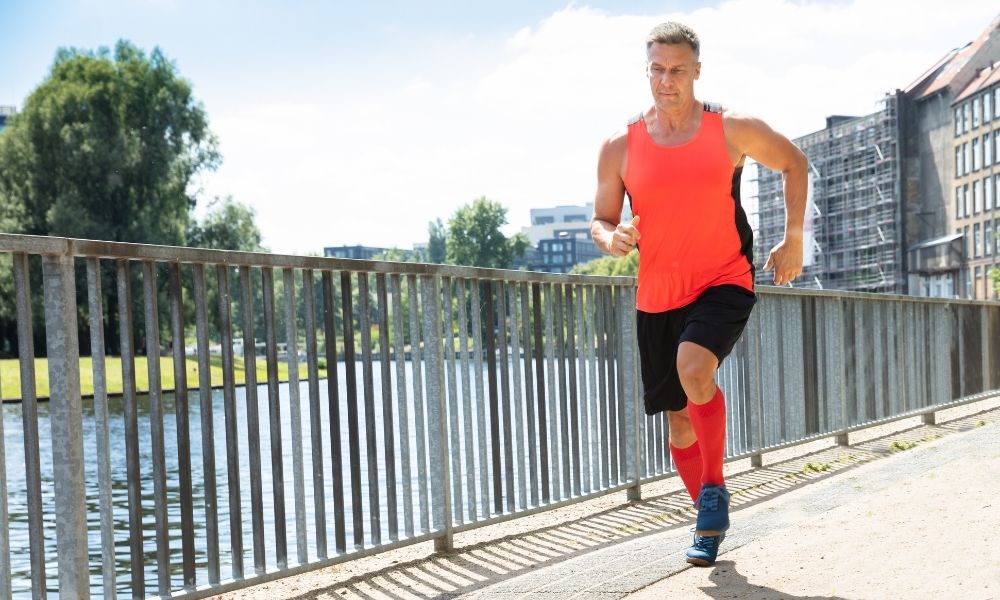
You stretch, hydrate, alternate muscle groups, and give your body the fuel it needs for exercise—but you may not be taking advantage of how compression socks help you recover after a workout. What happens once you stop moving is important, too, and your muscles need to rest and heal the right way. If you regularly put the “work” in “workout,” you can use all the help you can get.
Who Should Wear Them?
Compression socks are used by long-distance travelers, post-surgical patients, diabetics, and anyone with vein problems. Athletes have learned to appreciate their benefits, too, for better performance in competition. But if you’re not using compression socks after strenuous exercise, you’re not optimizing your training. Wearing a fresh pair afterward—or overnight—can reduce swelling, improve circulation, and help soreness in legs and feet.
Compression socks are known to help people on their feet all day as well as those who are unable to move freely during travel. But better circulation is key while active, too, and the socks keep working after your cooldown. After workouts, we need oxygen to travel to our muscles to heal the small tears that will make them stronger, and we need blood to usher it there.
How Compression Works
The specialized weave and material exert gentle pressure on critical areas such as the ball of your foot, your ankle, and on the plantar fascia—the tendon that runs from the bottom of your foot to your heel. Compression socks manipulate both veins and arteries to improve circulation to your legs, ankles, and feet. An artery responds to the outside pressure by contracting and dilating its inner wall, maintaining its diameter for maximum blood flow. At the same time, compression decreases the diameter of veins, making their valves more effective, and speeding de-oxygenated blood back to the heart.
Benefits of Compression
- More oxygenated blood to feed muscles during exercise
- Less strain on your heart
- Better body alignment
- Reduced vibration and muscle oscillation
- Less pain from conditions such as cramps, strains, and shin splints
- Faster recovery
Flushing Out Lactic Acid
Compression can help eliminate lactic acid, which slows down healing. During intense exercise, our muscles produce lactic acid for energy once all the oxygen is consumed. The better the blood flow, the more lactic acid it can flush out, and the faster the oxygen can heal your muscles.
At MK Socks, we’ve learned that the best equipment begins with the basics. The right socks can improve your performance and prevent injury, and compression socks help you recover after a workout. If you’re on a team or change in a locker room after workouts, personalized athletic socks can keep you from losing them. Take care of yourself from the ground up with the right socks, and set yourself up for the win.